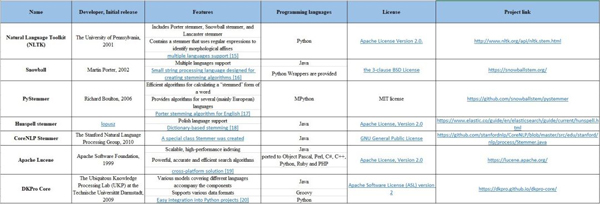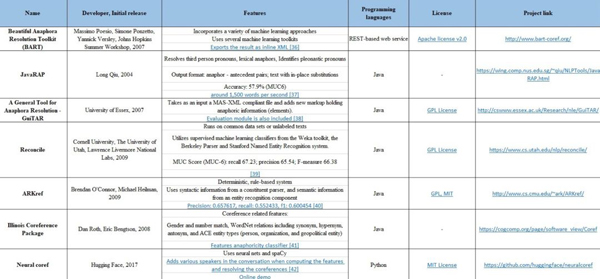您好,登录后才能下订单哦!
这篇文章主要介绍“实用Python文本预处理代码有哪些”,在日常操作中,相信很多人在实用Python文本预处理代码有哪些问题上存在疑惑,小编查阅了各式资料,整理出简单好用的操作方法,希望对大家解答”实用Python文本预处理代码有哪些”的疑惑有所帮助!接下来,请跟着小编一起来学习吧!
将文本中出现的字母转化为小写
示例1:将字母转化为小写
Python 实现代码:
input_str = ”The 5 biggest countries by population in 2017 are China, India, United States, Indonesia, and Brazil.” input_strinput_str = input_str.lower() print(input_str)
输出:
the 5 biggest countries by population in 2017 are china, india, united states, indonesia, and brazil.
删除文本中出现的数字
如果文本中的数字与文本分析无关的话,那就删除这些数字。通常,正则化表达式可以帮助你实现这一过程。
示例2:删除数字
Python 实现代码:
import re input_str = ’Box A contains 3 red and 5 white balls, while Box B contains 4 red and 2 blue balls.’ reresult = re.sub(r’\d+’, ‘’, input_str) print(result)
输出:
Box A contains red and white balls, while Box B contains red and blue balls.
删除文本中出现的标点
以下示例代码演示如何删除文本中的标点符号,如 [!”#$%&’()*+,-./:;<=>?@[\]^_`{|}~] 等符号。
示例3:删除标点
Python 实现代码:
import string input_str = “This &is [an] example? {of} string. with.? punctuation!!!!” # Sample string result = input_str.translate(string.maketrans(“”,””), string.punctuation) print(result)输出:
This is an example of string with punctuation
删除文本中出现的空格
可以通过 strip()函数移除文本前后出现的空格。
示例4:删除空格
Python 实现代码:
input_str = “ \t a string example\t “ input_strinput_str = input_str.strip() input_str
输出:
‘a string example’
符号化(Tokenization)
符号化是将给定的文本拆分成每个带标记的小模块的过程,其中单词、数字、标点及其他符号等都可视为是一种标记。在下表中(Tokenization sheet),罗列出用于实现符号化过程的一些常用工具。

删除文本中出现的终止词
终止词(Stop words) 指的是“a”,“a”,“on”,“is”,“all”等语言中最常见的词。这些词语没什么特别或重要意义,通常可以从文本中删除。一般使用 Natural Language Toolkit(NLTK) 来删除这些终止词,这是一套专门用于符号和自然语言处理统计的开源库。
示例7:删除终止词
实现代码:
input_str = “NLTK is a leading platform for building Python programs to work with human language data.” stop_words = set(stopwords.words(‘english’)) from nltk.tokenize import word_tokenize tokens = word_tokenize(input_str) result = [i for i in tokens if not i in stop_words] print (result)
输出:
[‘NLTK’, ‘leading’, ‘platform’, ‘building’, ‘Python’, ‘programs’, ‘work’, ‘human’, ‘language’, ‘data’, ‘.’]
此外,scikit-learn 也提供了一个用于处理终止词的工具:
from sklearn.feature_extraction.stop_words import ENGLISH_STOP_WORDS
同样,spaCy 也有一个类似的处理工具:
from spacy.lang.en.stop_words import STOP_WORDS
删除文本中出现的稀疏词和特定词
在某些情况下,有必要删除文本中出现的一些稀疏术语或特定词。考虑到任何单词都可以被认为是一组终止词,因此可以通过终止词删除工具来实现这一目标。
词干提取(Stemming)
词干提取是一个将词语简化为词干、词根或词形的过程(如 books-book,looked-look)。当前主流的两种算法是 Porter stemming 算法(删除单词中删除常见的形态和拐点结尾) 和 Lancaster stemming 算法。

示例 8:使用 NLYK 实现词干提取
实现代码:
from nltk.stem import PorterStemmer from nltk.tokenize import word_tokenize stemmer= PorterStemmer() input_str=”There are several types of stemming algorithms.” input_str=word_tokenize(input_str) for word in input_str: print(stemmer.stem(word))
输出:
There are sever type of stem algorithm.
词形还原(Lemmatization)
词形还原的目的,如词干过程,是将单词的不同形式还原到一个常见的基础形式。与词干提取过程相反,词形还原并不是简单地对单词进行切断或变形,而是通过使用词汇知识库来获得正确的单词形式。
当前常用的词形还原工具库包括: NLTK(WordNet Lemmatizer),spaCy,TextBlob,Pattern,gensim,Stanford CoreNLP,基于内存的浅层解析器(MBSP),Apache OpenNLP,Apache Lucene,文本工程通用架构(GATE),Illinois Lemmatizer 和 DKPro Core。
示例 9:使用 NLYK 实现词形还原
实现代码:
from nltk.stem import WordNetLemmatizer from nltk.tokenize import word_tokenize lemmatizer=WordNetLemmatizer() input_str=”been had done languages cities mice” input_str=word_tokenize(input_str) for word in input_str: print(lemmatizer.lemmatize(word))
输出:
be have do language city mouse
词性标注(POS)
词性标注旨在基于词语的定义和上下文意义,为给定文本中的每个单词(如名词、动词、形容词和其他单词) 分配词性。当前有许多包含 POS 标记器的工具,包括 NLTK,spaCy,TextBlob,Pattern,Stanford CoreNLP,基于内存的浅层分析器(MBSP),Apache OpenNLP,Apache Lucene,文本工程通用架构(GATE),FreeLing,Illinois Part of Speech Tagger 和 DKPro Core。
示例 10:使用 TextBlob 实现词性标注
实现代码:
input_str=”Parts of speech examples: an article, to write, interesting, easily, and, of” from textblob import TextBlob result = TextBlob(input_str) print(result.tags)
输出:
[(‘Parts’, u’NNS’), (‘of’, u’IN’), (‘speech’, u’NN’), (‘examples’, u’NNS’), (‘an’, u’DT’), (‘article’, u’NN’), (‘to’, u’TO’), (‘write’, u’VB’), (‘interesting’, u’VBG’), (‘easily’, u’RB’), (‘and’, u’CC’), (‘of’, u’IN’)]
词语分块(浅解析)
词语分块是一种识别句子中的组成部分(如名词、动词、形容词等),并将它们链接到具有不连续语法意义的高阶单元(如名词组或短语、动词组等) 的自然语言过程。常用的词语分块工具包括:NLTK,TreeTagger chunker,Apache OpenNLP,文本工程通用架构(GATE),FreeLing。
示例 11:使用 NLYK 实现词语分块
第一步需要确定每个单词的词性。
实现代码:
input_str=”A black television and a white stove were bought for the new apartment of John.” from textblob import TextBlob result = TextBlob(input_str) print(result.tags)
输出:
[(‘A’, u’DT’), (‘black’, u’JJ’), (‘television’, u’NN’), (‘and’, u’CC’), (‘a’, u’DT’), (‘white’, u’JJ’), (‘stove’, u’NN’), (‘were’, u’VBD’), (‘bought’, u’VBN’), (‘for’, u’IN’), (‘the’, u’DT’), (‘new’, u’JJ’), (‘apartment’, u’NN’), (‘of’, u’IN’), (‘John’, u’NNP’)]
第二部就是进行词语分块
实现代码:
reg_exp = “NP: {<DT>?<JJ>*<NN>}” rp = nltk.RegexpParser(reg_exp) result = rp.parse(result.tags) print(result)输出:
(S (NP A/DT black/JJ television/NN) and/CC (NP a/DT white/JJ stove/NN) were/VBD bought/VBN for/IN (NP the/DT new/JJ apartment/NN) of/IN John/NNP)
也可以通过 result.draw() 函数绘制句子树结构图,如下图所示。

命名实体识别(Named Entity Recognition)
命名实体识别(NER) 旨在从文本中找到命名实体,并将它们划分到事先预定义的类别(人员、地点、组织、时间等)。
常见的命名实体识别工具如下表所示,包括:NLTK,spaCy,文本工程通用架构(GATE) -- ANNIE,Apache OpenNLP,Stanford CoreNLP,DKPro核心,MITIE,Watson NLP,TextRazor,FreeLing 等。

示例 12:使用 TextBlob 实现词性标注
实现代码:
from nltk import word_tokenize, pos_tag, ne_chunk input_str = “Bill works for Apple so he went to Boston for a conference.” print ne_chunk(pos_tag(word_tokenize(input_str)))
输出:
(S (PERSON Bill/NNP) works/VBZ for/IN Apple/NNP so/IN he/PRP went/VBD to/TO (GPE Boston/NNP) for/IN a/DT conference/NN ./.)
共指解析 Coreference resolution(回指分辨率 anaphora resolution)
代词和其他引用表达应该与正确的个体联系起来。Coreference resolution 在文本中指的是引用真实世界中的同一个实体。如在句子 “安德鲁说他会买车”中,代词“他”指的是同一个人,即“安德鲁”。常用的 Coreference resolution 工具如下表所示,包括 Stanford CoreNLP,spaCy,Open Calais,Apache OpenNLP 等。

搭配提取(Collocation extraction)
搭配提取过程并不是单独、偶然发生的,它是与单词组合一同发生的过程。该过程的示例包括“打破规则 break the rules”,“空闲时间 free time”,“得出结论 draw a conclusion”,“记住 keep in mind”,“准备好 get ready”等。

示例 13:使用 ICE 实现搭配提取
实现代码:
input=[“he and Chazz duel with all keys on the line.”] from ICE import CollocationExtractor extractor = CollocationExtractor.with_collocation_pipeline(“T1” , bing_key = “Temp”,pos_check = False) print(extractor.get_collocations_of_length(input, length = 3))
输出:
[“on the line”]
关系提取(Relationship extraction)
关系提取过程是指从非结构化的数据源 (如原始文本)获取结构化的文本信息。严格来说,它确定了命名实体(如人、组织、地点的实体) 之间的关系(如配偶、就业等关系)。例如,从“昨天与 Mark 和 Emily 结婚”这句话中,我们可以提取到的信息是 Mark 是 Emily 的丈夫。
到此,关于“实用Python文本预处理代码有哪些”的学习就结束了,希望能够解决大家的疑惑。理论与实践的搭配能更好的帮助大家学习,快去试试吧!若想继续学习更多相关知识,请继续关注亿速云网站,小编会继续努力为大家带来更多实用的文章!
免责声明:本站发布的内容(图片、视频和文字)以原创、转载和分享为主,文章观点不代表本网站立场,如果涉及侵权请联系站长邮箱:is@yisu.com进行举报,并提供相关证据,一经查实,将立刻删除涉嫌侵权内容。